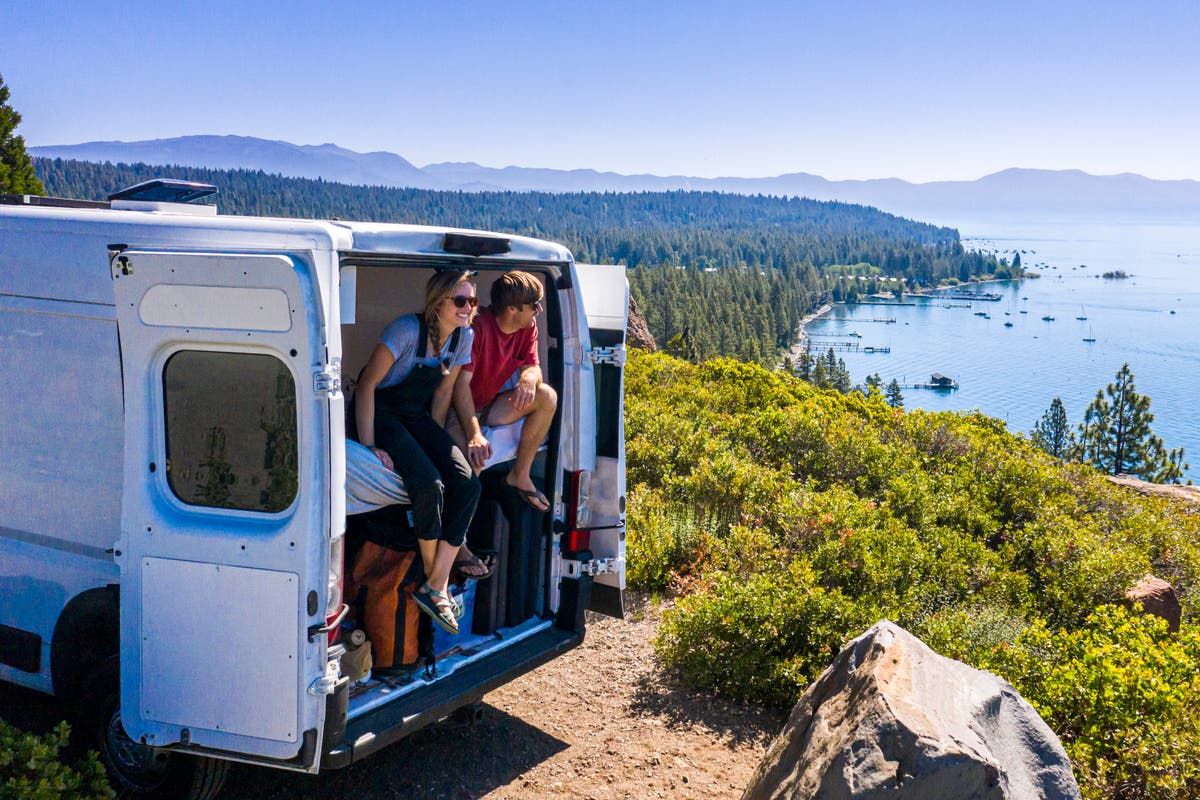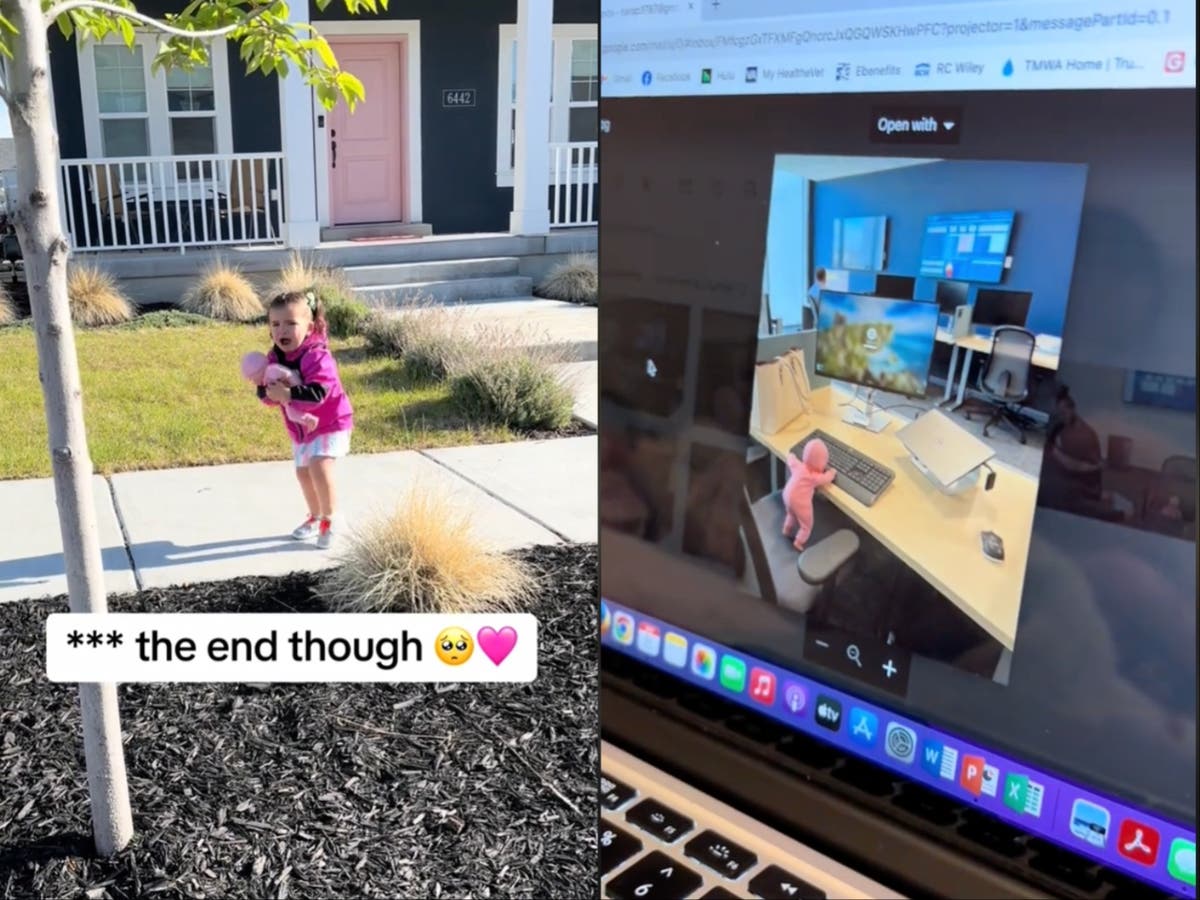W.What’s on your wish list? Whether it is, for example, walking with elephants, seeing the northern lights or walking through a rainforest, there is usually one thing in common: it is something that cannot be done in everyday life. Most of us wait until later in life to start marking it, let alone decide what it should contain. But what if you don’t want to wait? This, apparently, will be the year of the “bucket list lifestyle,” as young people entering the workforce change one of life’s fundamental questions: “what do you make a living?” to “how do you live?”
Trend forecasters have spotted the rise of the bucket list lifestyle and believe this will be the year it goes mainstream, as a younger generation will now prioritize seeing the wonders of the world, rather than being tied to a location-dependent physical workplace. .
Joanna Feeley, founder and CEO of forecasting agency TrendBible, tells me that her company has seen a movement towards mobile lifestyles and that we will see more people adopting digital nomadic lifestyles in 2024. She says the increase in “location-independent and technology-enabled lifestyles” is emblematic of a broader social shift: interest rates reaching an all-time high, first-time buyers taking out mortgages that will take more than 30 years to pay off, and the rising cost of rent. All these factors are driving young people away from conventional lifestyles that now seem boring, unattractive and tremendously expensive. Young people do not wait until a gap year or until retirement for that “trip of a lifetime”: they want it now and are willing to adapt their work to it.
Join the 19 billion people watching #VanLife on TikTok and you’ll find plenty of Pimp my trip-Style videos made by young people who are converting transit vans into DIY mobile homes, who will drive around different countries and continents to complete that bucket list, while working remotely.
Last year, 22-year-old Tia Forster was browsing Pinterest when she saw an image of a sun-filled van converted into a compact living space, outfitted with modern decor, glowing on her screen. She became obsessed with the idea of living in a cozy space on wheels, living a life without monotonous routines.
After weeks of research and estimating the financial cost of a repair, Forster decided to begin the process of converting a van into a mobile home. In June, he picked up his khaki-colored 2006 Mercedes Sprinter van and then began the process: stripping its interior down to its silver aluminum shell, ripping out the floor and cutting two large holes in the rear doors to fit windows. Next came the installation of the soundproofing, solar panels and skylight. Forster, who surprisingly had never picked up a drill until last summer, hopes to, within a few months, be chasing coastlines, hidden waterfalls and multicolored sunsets in her van while she works remotely at her job as a gift hunter. professional.
“I’ve watched endless hours of DIY videos on YouTube and researched every night until I fell asleep,” Forster tells me of his mammoth DIY job. “It’s always something I wanted to do and I knew I would eventually find some time to do it.” Forster’s goal is to complete the van and explore parts of the UK, such as his home on the Isle of Wight, and travel around parts of Europe, such as Italy. “It’s easy to get caught up in the routine of life, and Van Life is about getting out of that comfort zone and seeing something new every day… I can’t wait to explore, travel and follow the warm weather.”
Forster will be among hundreds of young people who have swapped the nine-to-five lifestyle and conventional living situations for a DIY converted van. Leaving behind overcrowded living conditions and trips to the city center, many of them seek peace. But peace comes with challenges, such as the self-sufficiency required when integrated sewage systems, washing machines or central heating are not available.
The #vanlife dream will go mainstream as more young people reject the nine-to-five workplace
(Ananda life experiences)
According to Feeley, Generation Z is beginning to aspire to a more nomadic way of life as they navigate their lives based on a series of adventure goals, such as seeing Nelson Falls in Australia, climbing a mountain in Switzerland or wilderness camping in Cornwall. . rather than living according to a strict five-year plan or a determination to move up the property ladder. “While not everyone will be traveling the world in a camper van, searches for #vanlife have increased 216% since 2018,” says Feeley. “And there is evidence of a trickle-down effect as people live more purposefully and pursue their dreams.”
Feeley adds that the trend could indicate that young people are also struggling to achieve a better work-life balance than their parents’ generation. “What motivates them is that they have seen how bad work-life balance can be and that they are looking for a better future,” she says. “A lot of data shows that Gen Z and younger millennials are very purpose-driven and looking for careers that are flexible and not something they want to give up.” Therefore, in pursuit of a slower pace of life, young people are looking to infuse adventure with work, rather than waiting for the day when they can afford to never work again.
WYSE Travel Confederation predicts the global number of digital nomads will rise to around 60 million by 2030
(Ananda life experiences)
Since Covid ushered in the rise of flexible working, the number of digital nomads has also increased and social infrastructure has been adapting as a result. In 2022, the Portuguese government introduced Digital Nomad Visas for non-residents to work from the country, while more global companies offer features that enable a “work from anywhere” policy. Feeley tells me that some companies are starting to recognize the business benefits of offering more flexible working to their employees, and one study shows that companies could experience greater growth if they offer “fully flexible” work contracts for their employees. And this is likely to increase, with the WYSE Travel Confederation predicting that the global number of digital nomads will exceed 40 million this year and rise to around 60 million by 2030.
Hence: camper vans. Chris Barham, owner of UK-based family-owned campervan conversion business Krisby’s Campers, tells me he’s been inundated with emails from people looking to buy a mobile home as #vanlife becomes more and more popular. aspirational. “We constantly receive emails throughout the year from inspired people [by the trend] and they want us to work on their personal vans and receive advice,” he tells me. “The process of converting a van, especially an old one, and seeing its transformation is extremely satisfying, and the community and culture of this nomadic life is growing rapidly, and I would dare say that the community is one of the fastest growing in the UK at the moment, especially since Covid.”
Designers Edden Ram and his partner Nicola Sun opened their US-based company Ananda Living Experiences last year when they were presented with the opportunity to work with a professional van builder. But Ram has mixed feelings about the popularity of the “van life” trend on social media and the way social media has made Van Life seem more attainable and no longer a “pipe dream.” “I think it’s great that people are exposed to an alternative way of living, but social media tends to glorify all aspects of life and it’s no different in the Van Life movement.” Ram worries that many people are exposed only to the good parts of living on the road, while the reality can sometimes be quite challenging. Dumping feces, fixing a broken water system, or driving endlessly for hours looking for a place to park overnight is not for the faint-hearted. “Many people are exposed to the highlights and might make decisions they regret,” says Ram, who adds that those who want to try the “van life” should experiment with short-term life on the road before take the step and invest thousands of dollars. pounds in a van. “I recommend everyone experiment short-term with life on the road before deciding to jump into Van Life and invest large sums or make important life decisions.”
But it seems that Generation Z looking to live on the road is anticipating the challenges ahead. Forster tells me that he has been watching other female solo travelers for safety tips. “The outside world can be scary, but I plan to install high security features in my truck and always check my surroundings,” he says. “I’ve never used a drill before, but seeing how far I’ve come, I’m really proud of myself.” So maybe wish lists are for now, not later, even if that means taking a quick business call while climbing a mountain.












